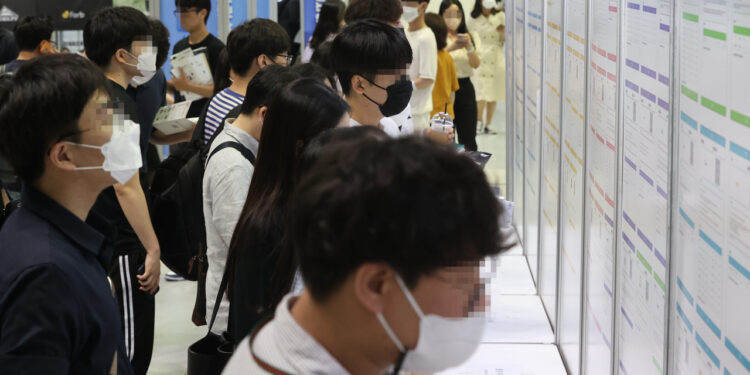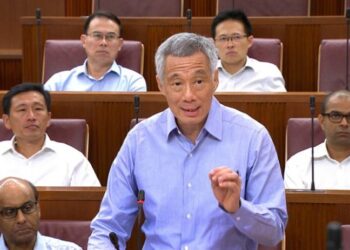South Korea’s employment growth continued to slow last month due to the manufacturing industry’s slump and the faltering real estate market, statistical office data showed Wednesday.
The number of employed people aged 15 or higher stood at 28,686,000 in July, up 211,000 from a year earlier, according to Statistics Korea.
The employment kept rising for the 29th successive month, but it was slower than the increase of 469,000 in March, 354,000 in April, 351,000 in May, and 333,000 in June.
The slower growth came as uncertainties mounted over the economy due to the manufacturing export fall and the higher interest rates leading to the housing market downturn.
The number of jobs among manufacturers shrank 35,000 in July from a year earlier, keeping a downward trend for the seventh consecutive month.
Jobs in the construction sector decreased 43,000 last month, but employment in the health and social welfare services and the lodging and eatery sectors grew 145,000 and 125,000, respectively.
The overall job growth was led by the elderly people. Except for employment among those aged 60 or higher, last month’s jobs declined compared to the same month of last year.
The number of jobs for those aged 60 or older jumped 298,000 in July from a year earlier, but the figures for those in their 20s and 40s retreated 128,000 and 61,000, respectively.
The number of regular employees climbed 513,000, but the readings for irregular workers and daily laborers shrank 144,000 and 188,000 last month.
The number of self-employed who hired workers increased 48,000, and the figure for the self-employed without employees gained 44,000.
The employment rate for those aged 15 or higher rose 0.3 percentage points over the year to 63.2 percent in July, while the OECD-method hiring rate for those aged 15-64 went up 0.5 percentage points to 69.6 percent.
The number of those unemployed came in at 807,000 in July, down 30,000 from a year earlier. The jobless rate declined 0.2 percentage points to 2.7 percent.
The expanded jobless rate slipped 1.2 percentage points to 9.3 percent last month, and the rate for those aged 15-29 slumped 2.9 percentage points to 16.8 percent.
The official unemployment rate gauges those who are immediately available for work but failed to get a job for the past four weeks despite efforts to seek a job actively.
The expanded jobless rate, called the labor underutilization indicator, adds those who are discouraged from searching for a job, those who work part-time against their will to work full-time, and those who prepare to get a job after college graduation, to the official unemployment rate.




















